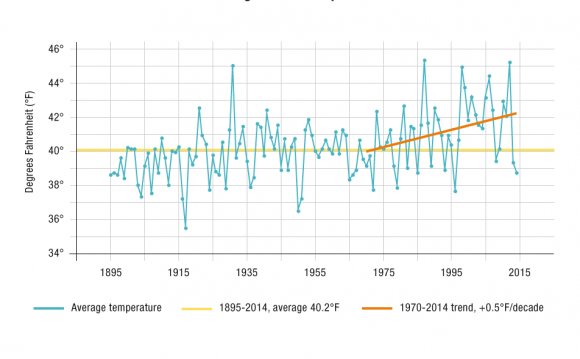
Minnesota has a continental climate, with cold, often frigid winters and warm summers. The growing season is 160 days or more in the south-central and southeastern regions, but 100 days or less in the northern counties. Normal daily mean temperatures range from 7°F (–14°C) in January to 66°F (19°C) in July for Duluth, and from 12°F (–11°C) in January to 74°F (23°C) in July for Minneapolis-St. Paul, often called the Twin Cities. The lowest temperature recorded in Minnesota was –60°F (–51°C), at Tower on 2 February 1996; the highest, 114°F (46°C), at Moorhead on 6 July 1936.
Annual precipitation (1971–2000) averaged 31 in (79 cm) at Duluth and 29.4 in (75 cm) at Minneapolis-St. Paul. Precipitation is lightest in the northwest, where it averaged 19 in (48 cm) per year. Heavy snowfalls occur from November to April, averaging about 70 in (178 cm) annually in the northeast and 30 in (76 cm) in the southeast. Blizzards hit Minnesota twice each winter on the average. Tornadoes occur mostly in the south; on average there are 18 tornadoes in the state each year.
RELATED VIDEO












